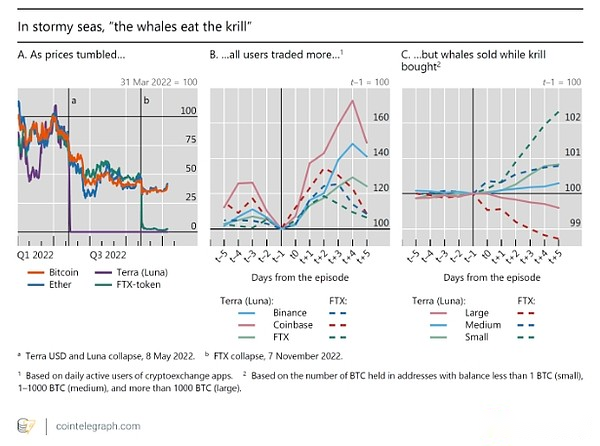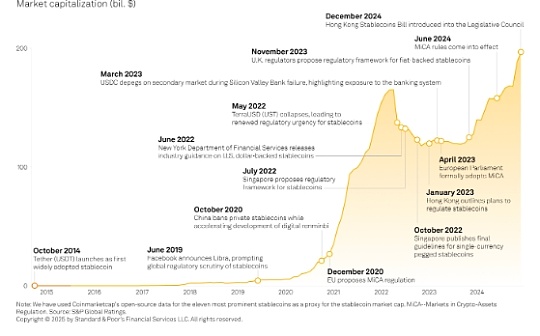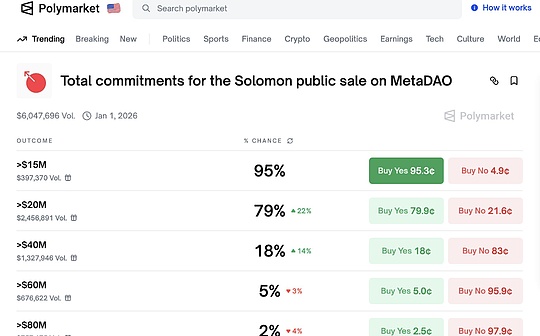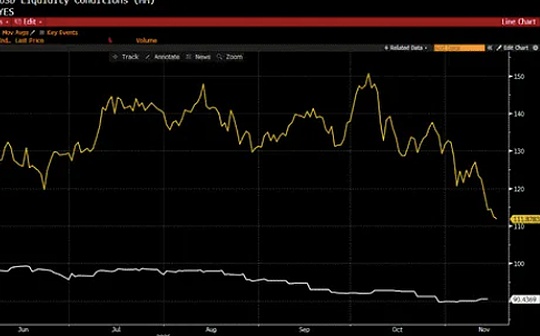
Author: Dilip Kumar Patairya, CoinTelegraph; Compilation: Baishui, Bitchain Vision
-
Bear attacks are when whales deliberately push down cryptocurrency prices through short selling, panic and uncertainty (FUD) and massive sell-offs, causing panic and profit from them.
-
These attacks will cause market volatility, trigger liquidation and damage retail confidence.However, they may also expose some projects that are weaker or have fraudulent behavior.
-
Signs of bear attacks include sudden price declines, surges in trading volumes, lack of news reports and a rapid rebound in prices, which all indicate price manipulation rather than natural market trends.
-
Traders can guard against bear attacks by setting stop orders, diversifying their portfolios, monitoring whale activity, and trading on reputable and regulated platforms.
In the dynamic world of cryptocurrency trading, not all market volatility comes naturally; some are designed to make profits quickly.Bear attacks are such a strategy, often driven by strong market players (called “whales”.
These traders strategically use short selling strategies, i.e. borrow and sell assets at current prices, with the goal of buying back at a lower price after the price falls.
So, how exactly does this strategy work?
This article explores the concept of bear market attacks and how they work in depth.It also covers how bear market attacks affect cryptocurrency markets, their signs, and how retail investors protect their interests.
What is a bear market attack?
Bear attacks are a strategy that deliberately lowers asset prices, often implemented through massive sell-offs and spreading fear, uncertainty, and doubt (FUD).This strategy can be traced back to the early days of traditional stock markets, when influential traders conspired to manipulate prices to make a profit.
The implementation of bear market attacks involves selling target assets in large quantities, filling the market with funds.A sharp increase in supply will put downward pressure on prices.Meanwhile, the implementer spreads negative rumors or emotions, usually through the media, to aggravate fear and uncertainty.As panic spreads, small or retail investors tend to sell their holdings, further accelerating price declines.
A bear market attack is different from a natural market decline.While both lead to price drops, bear attacks are carefully planned and purposeful to benefit those holding short positions.Natural market declines are driven by broader economic trends, market adjustments, or reasonable changes in investor sentiment.
Bear attacks are often considered as a form of market manipulation.Regulators are responsible for monitoring trading activities, investigating suspicious patterns, and punishing fraud such as stock price gouging or trading laundering.To increase transparency, regulators require exchanges to implement compliance measures, including KYC (Know Your Customers) and AML (Anti-Money Laundering) agreements.By imposing fines, injunctions or taking legal action, regulators are committed to maintaining fair markets and protecting investors.
Regulators are trying to curb cryptocurrency market manipulation by enforcing strict rules and surveillance.In the U.S., the Securities and Exchange Commission (SEC) focuses on crypto assets that qualify securities, while the Commodity Futures Trading Commission (CFTC) regulates commodities and their derivatives.Under the Crypto Asset Market Supervision Act (MiCA), EU law enforcement is the responsibility of financial regulators in member states.
Who carried out bear market attack?
In the cryptocurrency world, a “whale” refers to a large investor who can perform short attacks.With a large number of cryptocurrencies in hand, whales are able to influence market trends and price movements in ways that small retail investors cannot.
Whales operate larger than other traders, thanks to their more capital and more advanced tools.
You may be just looking for short-term gains or just following the trend, but whales often use strategic buys or sells to create price volatility that is conducive to their long-term positions.Their actions are carefully planned and may even affect the market without your knowledge.
If you are a veteran cryptocurrency trader, you may have noticed the massive transfer of cryptocurrencies between wallets.Such a massive cryptocurrency transfer has caused panic or panic in the cryptocurrency community.For example, when a “whale” transfers a large amount of Bitcoin to an exchange, this could indicate a potential sell-off, resulting in a price drop.Instead, transferring cryptocurrencies from exchanges to self-custodial wallets may mean long-term holdings, which may lead to price increases.
The relatively low liquidity of the cryptocurrency market gives the “whale” the influence on cryptocurrency trading.Compared with traditional financial markets, a large transaction is enough to fluctuate prices significantly due to the small number of buyers and sellers.This means that “whales” can manipulate market conditions intentionally or unintentionally, which often makes it difficult for retail traders to keep up.
Examples of whales profiting from price drops in real world
In the cryptocurrency space, short attacks are often difficult to confirm due to anonymity.However, the following cases of whales profiting from falling cryptocurrency prices will help you understand how such situations work:
Terra Luna collapsed (May 2022)
A report from the Bank for International Settlements (BIS) revealed that during the cryptocurrency market crash triggered by the Terra crash in 2022, the whale made profits at the expense of retail investors.Small retail investors buy cryptocurrencies primarily at lower prices, while whales mainly sell their holdings to profit from the market downturn.
In May 2022, the Terra blockchain was temporarily suspended due to the collapse of its algorithmic stablecoin TerraUSD (UST) and its associated cryptocurrency LUNA, causing its market value to evaporate by nearly $45 billion in a week.The company behind Terra filed for bankruptcy on January 21, 2024.
FTX crash (November 2022)
In November 2022, the close financial ties between FTX and Alameda Research triggered a ripple effect: a bank run, a failed acquisition deal, FTX bankruptcy and founder Sam Bankman-Fried was criminally charged.
However, with the collapse of FTX, retail investors flocked to buy again.However, according to the same report by the Bank for International Settlements (BIS) discussing the Terra Luna crash, whales sold out cryptocurrencies in large quantities before prices plummeted.

Figure 1.B shows wealth transfer, where large investors liquidate holdings, putting small investors at a disadvantage.In addition, Figure 1.C also shows that after the market fluctuations, the big bitcoin investors (whales) reduced their holdings, while the small investors (called “shrimps” in the report) increased their holdings.Price trends show that whales sell their Bitcoins to “shrimp” before the price drops sharply, thus making profits at the expense of “shrimp”.
Bitconnect (BCC) crash (January 2018)
Bitconnect is a cryptocurrency that promises exceptionally high returns through so-called trading bots, but experienced a tragic crash in early 2018.Although the platform’s valuation once exceeded $2.6 billion, there is widespread suspicion of its Ponzi scheme.
The token plummeted by more than 90% in a matter of hours.Although this is not a typical bear market attack, the sudden exit from insiders and whale sell-offs, coupled with negative publicity, have produced a chain reaction, which has severely damaged retail investors.
How whales perform short attacks in cryptocurrency, key steps
In the cryptocurrency space, whales can use their huge holdings to trigger price plunges and profit from subsequent panics, thus carrying out short attacks.These strategies are usually divided into the following steps:
-
Step 1: Accumulate position:The whale will first establish some positions that can profit from price declines, such as shorting cryptocurrencies or preparing to buy in large quantities after the price falls.
-
Step 2: Launch a raid:Next, the whale will trigger the sell-off by selling target crypto assets in large quantities.A sudden surge in supply will lead to a sharp drop in prices and shake market confidence.
-
Step 3: Spread Panic, Uncertainty, and Uncertainty (FUD):To maximize the impact, whales may use coordinated social media campaigns or fake news to spread panic, uncertainty and uncertainty.Rumors such as adverse regulatory actions or bankruptcy may spread quickly, prompting retail investors to sell out in panic.
-
Step 4: Raise a sell-off:The obvious large sell orders and negative sentiment will prompt other investors to sell their assets, thereby exacerbating downward pressure on asset prices.
-
Step 5: Make profits on dips:Once the price plummets, whales will intervene, either repurchase assets at a lower price or close positions to make a profit.
Whale’s trick: How do they manipulate the market?
Crypto whales use complex strategies to conduct short raids and manipulate the market for their own benefit.These strategies give whales an advantage over retail traders, allowing them to manipulate prices and make profits, while retail traders have to deal with market chaos alone:
-
Trading robots and algorithms:Advanced robots allow whales to execute large sell orders in milliseconds, triggering price plunges.Before the market responds, the whales turn the situation around and move it in a direction that is beneficial to themselves.
-
Leverage and margin trading:Whales rely (to a large extent) on leverage and margin trading to make profits.Borrowing funds allows them to increase their position size and increase the pressure on selling orders.This will trigger a stronger market reaction than the stocks they hold.
-
Some exchanges have low liquidity:Whales can place large sell orders in markets with poor liquidity, fewer participants and lower trading volume, resulting in a sharp drop in prices.They may even manipulate order books by placing and canceling large fake orders (so-called “deception”) to deceive other traders.
-
Work with other whales:Whales may work with other large positions or trading groups to coordinate attacks, making short attacks more effective and harder to track.
The impact of bear market attack on cryptocurrency markets
Bear attacks could severely disrupt cryptocurrency markets.Here are its impacts on different actors and on the wider ecosystem:
-
Impact on retail investors:Retail investors often overreact during bear market raids.Sudden price declines and panic spreads often lead to panic selling, causing heavy losses to investors exiting at the bottom.Most retail investors sell emotionally, not realizing that they are just about the whale’s idea.
-
Wide market impact:A bear market raid will increase market volatility and put new and old investors at greater risk.These events may shake overall confidence in the cryptocurrency sector, leading to reduced trading activity and investor hesitation.In extreme cases, they may even trigger liquidation of multiple platforms.
-
Potential positive impact:Bear market raids can sometimes purify the cryptocurrency market.Market adjustments triggered by such raids will remove overvalued assets from unsustainable high levels.In some cases, these raids may expose some weak or fraudulent projects, forcing investors to reevaluate their options.
Signs of a cryptocurrency bear attack
Bear attacks are misleading market behavior, similar to real market declines, often inducing traders to sell prematurely.A rapid price decline may look like the beginning of a bear market trend, leading retail traders to make impulsive decisions.
Typically, these declines are short-lived and prices will quickly rebound once the whale profits are settled.Identifying signs of cryptocurrency bear attacks is key to avoiding losses.
Here are some signs of a cryptocurrency bear attack:
-
Price suddenly fell, seemingly breaking through the support level
-
Trading volume surged during market decline
-
Rebounded quickly after falling
-
Negative sentiment triggers traders panic
-
No major news can explain the decline
How to protect yourself from cryptocurrency bear market attack
To protect your investment from cryptocurrency bear markets, you can adopt the following strategies:
-
Conduct a comprehensive technical analysis:Regularly analyze price charts and indicators to identify real market trends and manipulation behaviors.
-
Execute a stop loss order:Set the preset selling point and automatically close the position when the price falls to a certain level, thereby limiting the potential losses in the market when it suddenly falls.
-
Diversified portfolio:Spread investments across assets to reduce risk.A diversified portfolio is not susceptible to any single asset being hit by a bear market.
-
Stay tuned for market trends:Focus on market news and dynamics to better predict and respond to potential manipulation behavior.
-
Choose a reputable exchange:Choose trading platforms with strong market manipulation measures to ensure a fairer trading environment.

Moral debate: Cryptocurrency market manipulation and free market dynamics
The principles of free market dynamics are in sharp contrast to market manipulation strategies such as bear market attacks.
Free market supporters advocate minimizing regulatory intervention, believing that this is conducive to innovation and self-regulation.A free market is an economic system that determines the prices of goods and services by supply and demand.However, the decentralized and often unregulated nature of the cryptocurrency market makes it susceptible to manipulation behavior.
Bear attacks require criminals to work together to lower asset prices, mislead investors and undermine market integrity.Such strategies can cause losses to retail investors and weaken people’s trust in the financial system.
Critics point out that without adequate regulation, these manipulation strategies could surge, leading to unfair advantages and potential economic damage.
While free market dynamics are valued for promoting efficiency and innovation, in the cryptocurrency space, unrestricted market manipulation can have catastrophic consequences.Events like bear market attacks highlight the need to balance regulation to ensure fairness and protect investors.
Cryptocurrency regulations for market manipulation strategies worldwide
Cryptocurrency market manipulation, including short raids, has triggered different regulatory responses worldwide.In the United States, the Commodity Futures Trading Commission (CFTC) classifies digital currencies as commodities and actively combats fraud, including market manipulation such as fraud and market wash trading.The Securities and Exchange Commission (SEC) has also taken action against individuals who manipulate the digital asset market.
The EU has implemented Crypto Asset Market Supervision (MiCA) to establish a comprehensive framework to address market manipulation and ensure consumer rights of stablecoins.
Despite these efforts, the decentralized and boundless nature of cryptocurrencies still presents challenges to regulators.Amid the ever-changing digital finance landscape, global cooperation and adaptive regulatory frameworks are crucial to effectively combating market manipulation and protecting investors.








